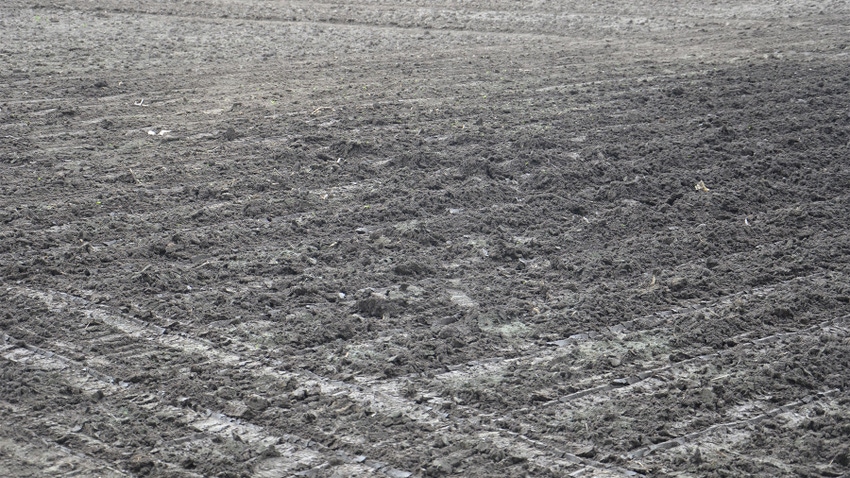December 26, 2023

by Tony Bailey
Did your fields suffer from iron toxicity in 2023? Of course, this is tongue-in-cheek. The nutrient iron didn’t likely cause issues in the eastern Corn Belt. However, can you see evidence of too much tillage? Has too much “big iron” caused toxicity in your fields?
There are several ways this manifests itself. Take a look:
Erosion and runoff. Do you see erosion or sedimentation? Soil conservationists once advocated that if enough residue was left on the surface, it would prevent water and wind erosion. If residue prevents erosion, why do you see erosion in some no-till fields?
It comes down to the role of functioning soils. If the soil has aggregate stability and structure, it will let water infiltrate more quickly and prevent erosion. Soil that lacks aggregate stability crusts over more easily, preventing precipitation from entering. If the soil exhibits soil compaction, water can’t move freely through the soil profile.
Crusting and soil compaction cause a higher percentage of precipitation to run off, causing erosion. If you see evidence of erosion, perhaps your fields have water infiltration problems.
Ponding. This past summer’s rainfall was sporadic. Some areas saw ponding. What causes ponding? Just because it rains an inch doesn’t mean an inch of rainfall infiltrated where the raindrop landed. If only 0.25 inch infiltrates where it landed, the other 0.75 inch runs somewhere else — usually downhill until it ponds.
Soils respond differently. Ponding is not likely equal across the whole field. Again, crusting and soil compaction, along with low spots, are mostly to blame. Adding more tile under ponded locations by itself will not cure this problem. Splitting middles with more tile is also questionable. If rainfall is not infiltrating, water can’t get to the tile fast enough to prevent ponding. If you already have tile and still see ponding, there are likely other soil issues at play that you should investigate.
Tops of hills getting shorter. Tillage pulls more soil downhill than uphill due to gravity. Thank you, Sir Isaac Newton!
Shorter fence post syndrome. This effect develops because of soil accumulation in the fencerow. It happens due to wind erosion from unprotected soil from tillage.
Brown water. Runoff will turn brown due to soil no longer having water-stable aggregates, caused by tillage. When soil runs off, sand drops out of the water first. Silt and clay particles stay suspended much longer, making water brown. What color is water running off your fields — clear or brown?
More power needed. Is more horsepower needed because equipment is bigger? Or because the soil is degraded with loss of topsoil and soil tilth due to tillage and lack of diverse rotations? More likely, it is a combination of both. Ask your tile contractor if the tile plow pulls easier in a no-till or tilled field. You might be surprised at the answer.
If you think your soils suffer from “iron toxicity,” talk with your local Natural Resources Conservation Service and soil and water conservation district staff. See how you can remedy this phenomenon.
Bailey is the Indiana state conservation agronomist with the NRCS. He writes on behalf of the Indiana Conservation Partnership.
You May Also Like




